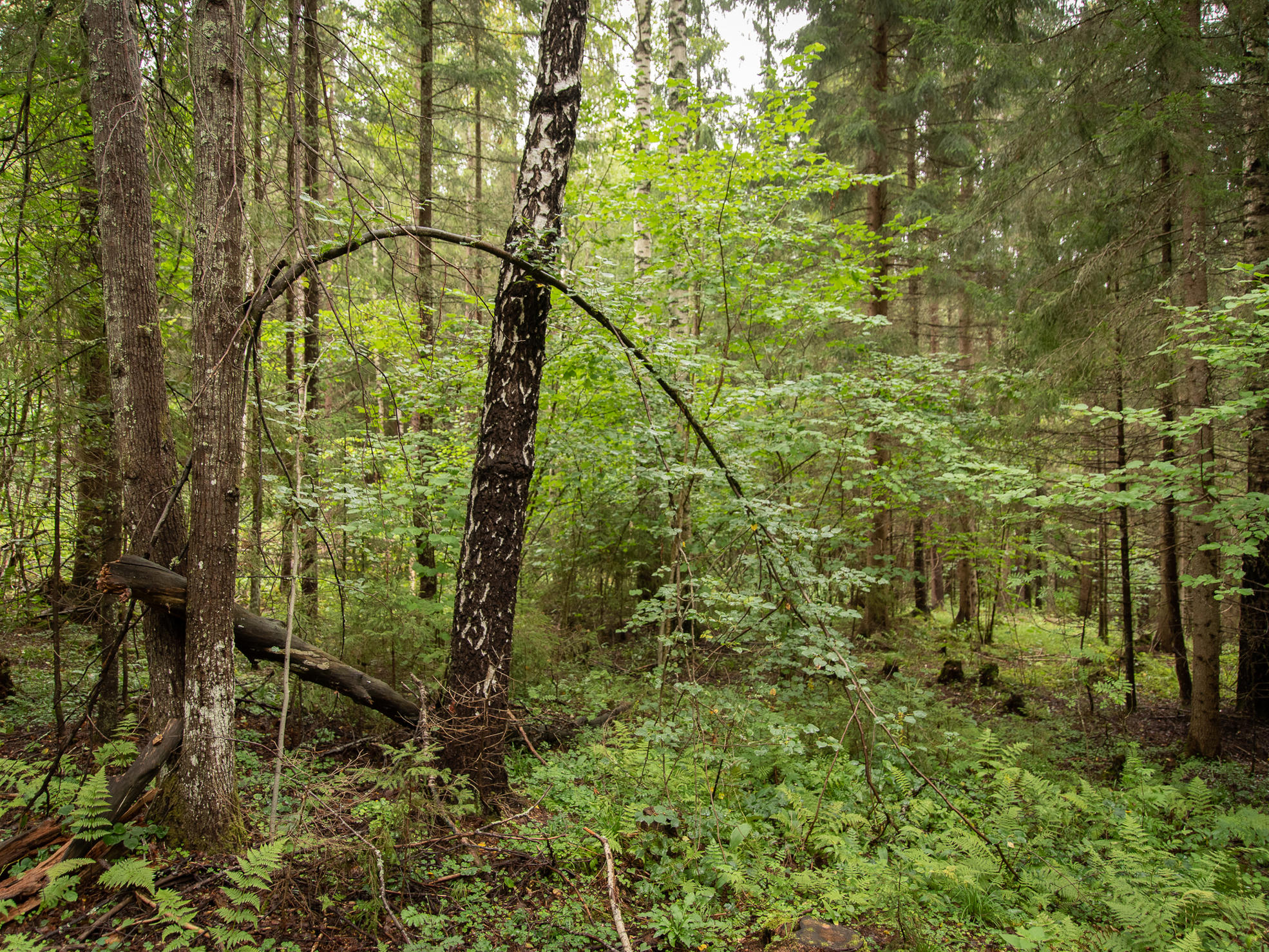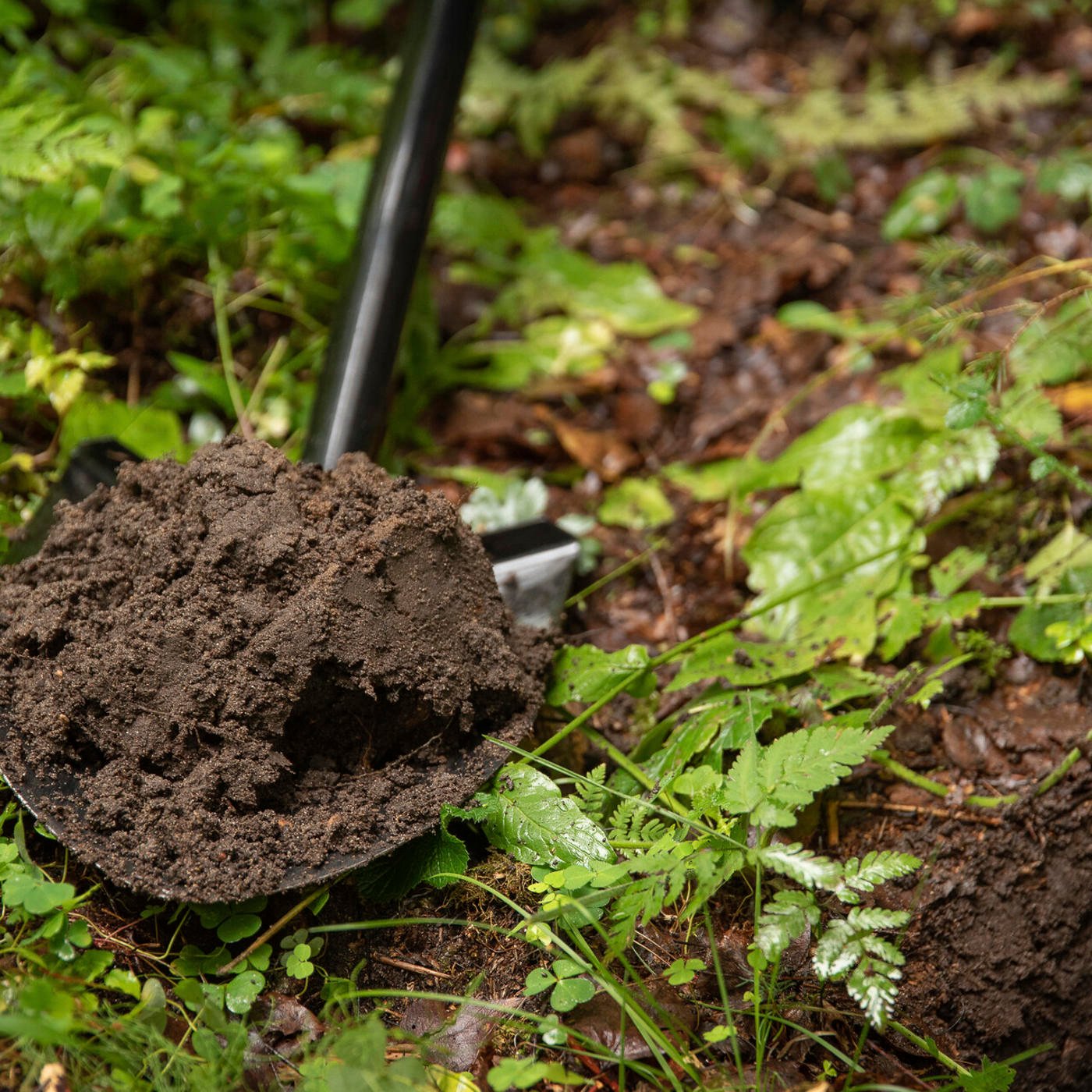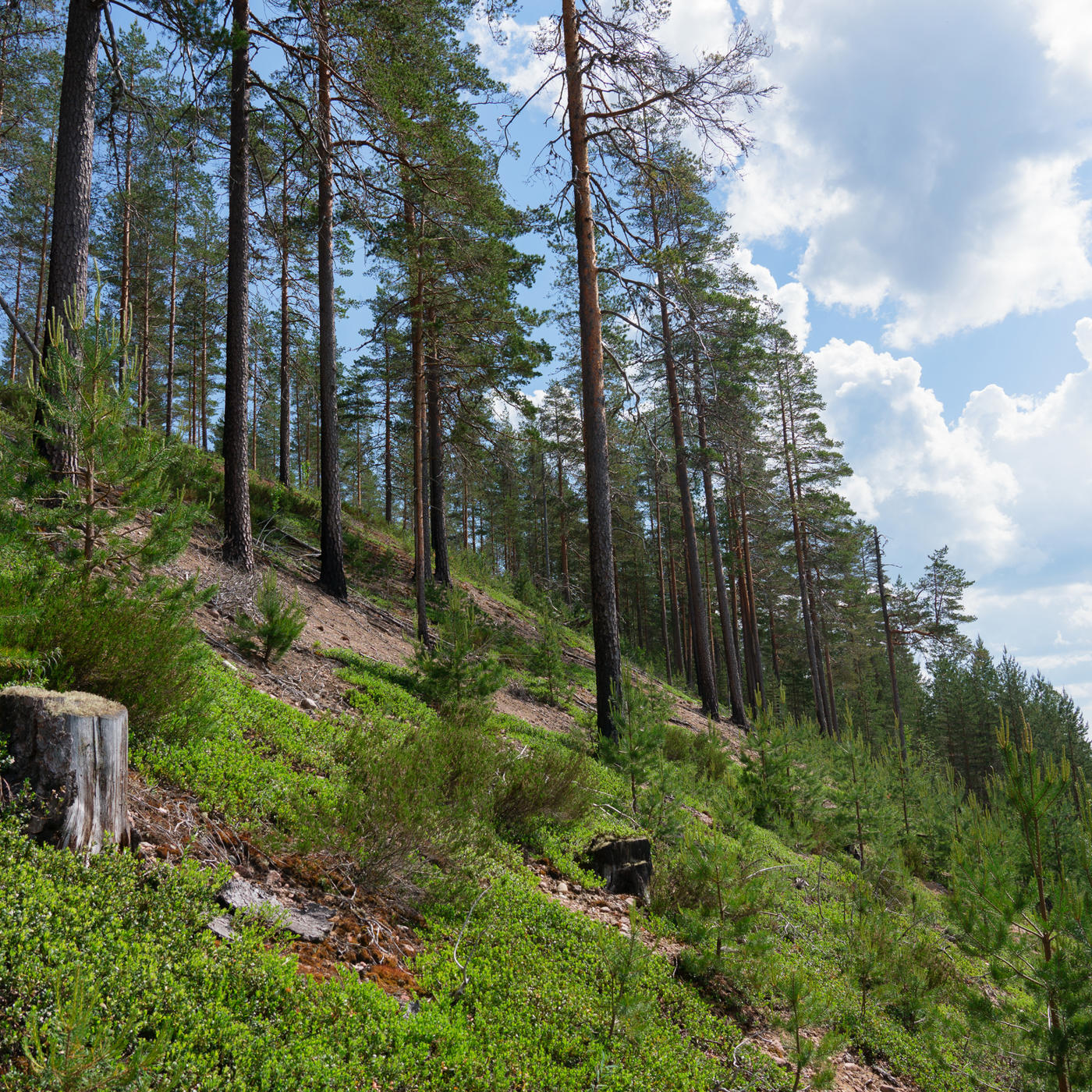The total area of both herb-rich forests and sunlit slopes is small, but their importance for forest biodiversity is great in relation to their area. Herb-rich forests account for only 1–2 per cent of our forests, and only a few thousand hectares of representative sunlit habitats remain in Finland.
However, they are an important habitat for many vulnerable forest species, offering a home to nearly half our threatened species living in forests. In turn, sunlit habitats offer a home to 12 per cent of all the endangered forest species.
In its owner-members’ commercial forests, Metsä Group recommends nature management for herb-rich forests and voluntary conservation for the best sites in the first instance. Nature management is also recommended for slopes featuring the properties required of habitats for sunlit species. We recommend voluntary protection for the most representative sunlit slopes. The forest owner always decides which method to use.
What does nature management mean?
Nature management aims to boost the natural properties of sunlit habitats, as well as increase the number of sunlit species and attract them back to the site.
- In the management of herb-rich forests and sunlit slopes, the emphasis is on management measures that improve biodiversity instead of on tree growth.
- Nature management and tree growth often go hand in hand in herb-rich forests and on sunlit slopes.
- In the management of herb-rich forests and sunlit slopes, we direct management measures to the places where they have the greatest impact on biodiversity. We have trained our personnel so that they can advise our owner-members on the management of herb-rich forests and sunlit slopes.
- Among other things, the management of sunlit slopes aims to make the site more open in areas at risk of overgrowth and break the soil. We recommend that any regeneration felling on sunlit slopes is carried out as seed-tree or group selection cutting, and that the surface of the mineral soil should be uncovered. Controlled burning also improves the living conditions of sunlit habitats.
Profitable forest and nature management can go together
Herb-rich forests are nutrient-rich sites abundant in species. That’s why most herb-rich forests used to be cleared to make way for fields.
The most representative of the remaining herb-rich forests in Finland are protected as habitats of special importance under the Forest Act and in the conservation programme for herb-rich forests. Hazel forests and broadleaved forests are protected by the Nature Conservation Act.
In herb-rich forests in commercial use, the main threats to species include changes in the ratio of tree species, forest renewal and management actions, and the decline in decaying wood and large deciduous trees.
The species typically found on sunlit slopes are threatened by forest overgrowth, eutrophication and the absence of forest fires and other disturbances.
Appropriately managed, both profitable forestry and nature management can be carried out in herb-rich forests and on sunlit slopes. Nature management on sunlit slopes and in herb-rich forests is one of the ways in which Metsä Group implements the principles of regenerative forestry in Finnish forests.


